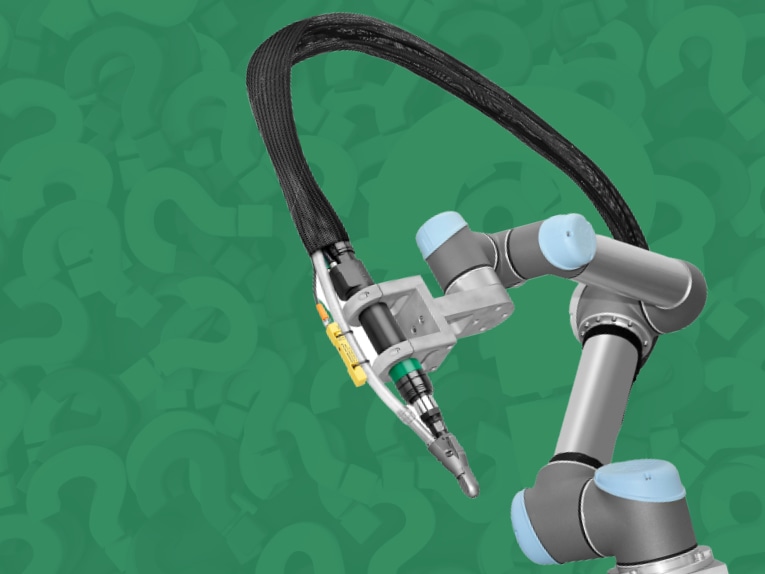
#Industry News
Tightening with Cobots
Let's break down the main doubts
When we talk about industrial automation, we venture inside an ever-evolving world that can offer countless ways to optimize productivity and processing times within very different sectors.
In this context, especially Cobots can offer many opportunities in multiple application fields, particularly also in the industrial tightening sector, where, however, one may often encounter doubts and questions to be answered.
Let's start with order: what are Cobots?
Cobots are anthropomorphic "Collaborative" Robots that can be integrated within production lines, characterized by specific peculiarities that differentiate them from traditional robots:
- Work at close range from the operators, who perform repetitive actions in alternation with the Collaborative Robot, ensuring their maximum safety
- Easy to integrate into existing workflows
- Can be customized, thanks to the possibility of attaching different tools to the wrist of the Cobot itself (their final joint)
- Lightweight, space-saving and easy to move, can be anchored to the floor, wall or ceiling, ensuring flexibility of operational layouts and the possibility of rapid set-up changes to adapt quickly to varying production needs.
So Why are Cobots perfect for tightening?
As evident from this short list, their inherent characteristics make Cobots excellent solutions for performing repetitive actions such as tightening, generating a system that guarantees repeatability, precision and consistency without any danger to the operators who interact with them in close contact. Automating a tightening application still remains a challenging goal, with precise conditions required to determine proper operation. One example is the equality of the screws used, since it is not in fact possible to handle multiple screw formats with the same tightening system, especially when talking about an automatic or semiautomatic system.
Analyzing then the main doubts we may encounter in this sector, we then see how Cobots prove instead to be valuable allies for the tightening phases:
- Are they really accurate?
Repeatability is one of the main characteristics of Cobots; in fact, most manufacturers have ensured to equip their product with a strength and torque sensor. This makes them sensitive to even the smallest movements and they are programmed to perform precision operations with an accuracy between +/- 3/5 hundredths of a millimeter. In the context of tightening, they also allow to sense the positioning of the component to be tightened on, correcting the approach thanks to a hole-finding movement in force that allows them to position exactly in the center of the tightening point.
- Are they really safe?
Cobots are equipped with very effective safety measures such as laser scanners and programmable light curtains to harden or soften safety conditions. With regard to this aspect, however, it is necessary to bring to attention the fact that, as much as the Cobot can be a collaborative system, it is necessary to broaden the concept of collaborativeness to the whole application by performing the analysis of potential risks to determine the degree of safety ( and of the related systems) to be included in the system. For example, a Cobot with a welding torch mounted on its wrist is NOT COLLABORATIVE.
- Can the clutch of the screwdriver create problems?
Possible impacts that may be generated when torque is reached are handled without creating blockages, arm damage, or other problems, thanks to the torque and strength sensor, so the Cobot should automatically act as a reaction arm.
- Aren't the costs too high?
Not only these solutions are Industry 4.0, but they are above all systems that allow a very fast return on investment, even reaching Pay Back of 6 or 7 months at most!
Here, then, automation and screwing come together in the service of the operator, for an active and continuous collaboration that allows the best use of tightening time, managed by the Cobot, to improve productivity and the quality of finished products.
Do you have any other Cobot-related doubts?
If you would like to explore further with specific questions contact our referral specialist: ifonti@fiamgroup.com





